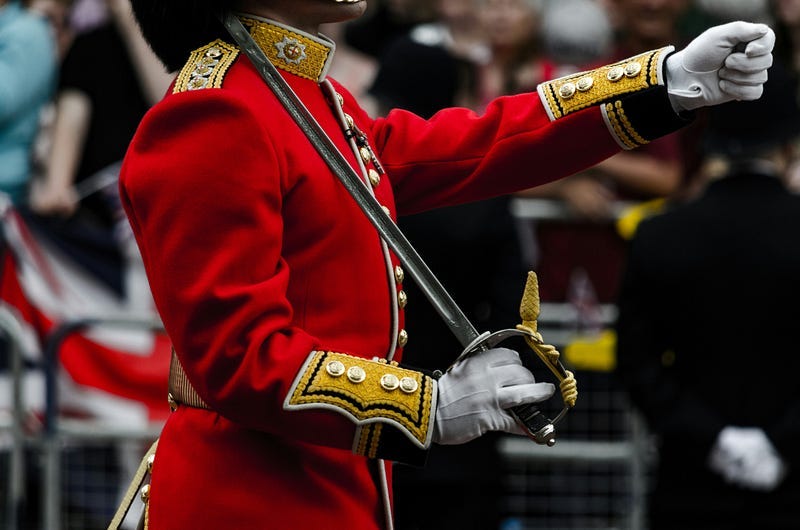How East India Company became the First Largest Corporation in the world.
On 31st Dec 1600, Queen Elizabeth I granted a charter to a group of London merchants for exclusive overseas trading rights with the East…

On 31st Dec 1600, Queen Elizabeth I granted a charter to a group of London merchants for exclusive overseas trading rights with the East Indies.
East Indies was the name given to the Indian subcontinent and other countries that were in the Eastern hemisphere.
The merchants put up 70,000 pounds of their own money to finance the venture, and the East India Company was born.
During that time, India was a home to spices, fabrics and and luxury goods that Europeans had started to fancy.
The fabrics from different regions of India became a fashion statement in the streets of London.
But sea voyages to India were risky because of robberies, armed clashes with rival traders and deadly diseases like scurvy.
And that’s why the East India Company’s royal charter gave it the rights to ‘wage war’.
So the company started looking for employees who could shoot a gun, take down some enemy and be useful out of their work desks — soldiers.
Initially, the company used its power and military force to protect itself and fight against rival traders.
But later on, the same military force was used to curry favor with the Indian rulers & Mughal Empire.
You see, even though EIC was technically a private company, its royal charter and battle-ready soldiers gave it political weight.
Indian rulers would invite local Company bosses to court, take bribes from them, and recruit the Company’s soldiers in regional wars.
This exchange of favours set the foundation for the transformation of EIC from a profitable trading company to a full-fledged empire.
And the transformation took place right after the Battle of Plassey in 1757.
The battle pitted 50,000 Indian soldiers under the Nawab of Bengal against just 3,000 Company soldiers.
The Nawab was angry with the Company for skirting taxes.
But what the Nawab didn’t know was that Robert Clive company’s military leader had already struck a backroom deal with Indian bankers so that most of the Indian soldiers refused to fight at Plassey.
After the battle, Robert Clive became Bengal’s governor and began collecting taxes and customs, which were then used to purchase Indian goods and export them to England.
Basically, they started using our money to buy our products and then sell it in London to make more money.
We might not like it but the investors of the company were surely satisfied with the 30% dividend they were getting from EIC’s shares.
Oh and if you think that the investors I am talking about were only in London then sorry to burst your bubble but there were a lot of influential folks in India who invested in the ‘growing economy’ in some form or another.
The company then kept on building on its victory and drove the French and Dutch out of the Indian subcontinent removing any trading competition.
The monopoly that they set out to build from London was in place.
By 1818, the company gained a lot of political power in India, with direct control over two thirds of the subcontinent’s land and indirect control over the rest.
At its best, the company had an army of 260,000 soldiers which was twice the size of the British standing army.
After a while, EIC’s rise to political power in India became a subject of heated debate in Britain, because of the institutionalized corruption & company’s nefarious actions.
Basically, the company’s actions started throwing shade at the British Empire’s pristine image and more importantly MONEY problem.
Which led to North’s Regulating Act (1773) and Pitt’s India Act (1784)
— This brought the company under closer parliamentary supervision and internal reforms were made to remove private corruption.
Private corruption was all about the company’s soldiers looting valuables on the side and not reporting back to the headquarters.
The laws were put in place to improve the company’s public image and the efficiency of its revenue-extracting machine.
Reforms such as the remodelling of the judiciary and the 1793 Permanent Settlement Agreement (which fixed the rate of land tax) took place under the disguise of ‘improving’ Indian society.
But when the revolt of 1857 happened, and observers in Britain who were already unhappy with the rich ‘nabobs’ who returned from India were quick to criticize the mistakes of the EIC.
One such criticism was that the EIC was not doing enough to promote the spread of Christianity by funding churches and aiding missionaries.
This was true since the company banned all missionaries until 1813.
The directors were wary of making the mistakes the Portuguese Empire had made in spreading Catholicism, which alienated potential allies of other faiths.
This was one of the few areas which reminded the EIC was a trading body and not a sovereign state.
But apart from religion, the interests of the EIC and the British government were never different.
Now because of all the criticism, once the uprising of 1857 was suppressed — control of India passed from the East India Company to the crown and came to be known as British Raj.
In 1858, the British government ended the company rule. And by 1874, the company became a shell of its former shelf and was dissolved.
Life indeed comes to full circle, EIC came to India for money & got dissolved for money.
The death of EIC in the 1870s was less about political and moral outrage but more about English politicians and businessmen realizing that
— they could make even more money trading with partners who were on a stronger economic footing and not captive of a corporate state.
Thanks for Reading:)


